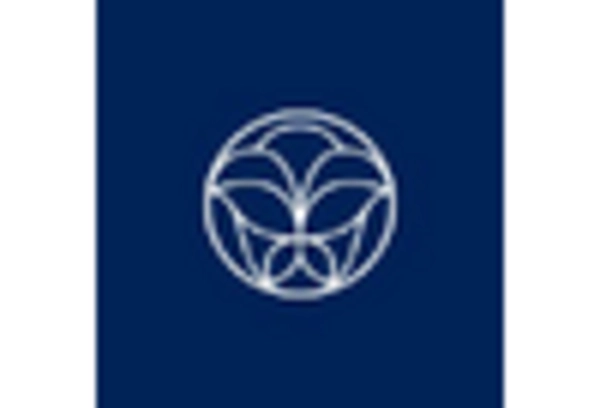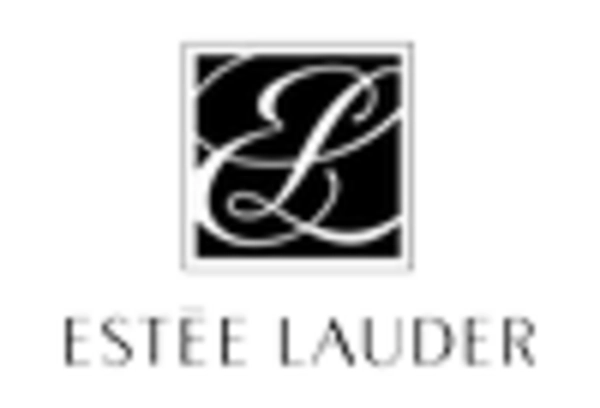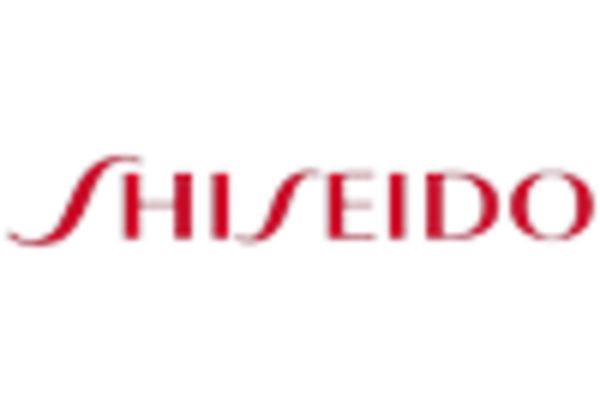Rise of Male Grooming Products
The colour cosmetics market in Germany is witnessing a burgeoning interest in male grooming products, reflecting a broader societal shift towards acceptance of cosmetics among men. Recent studies indicate that approximately 30% of men in Germany use some form of cosmetic product, ranging from skincare to makeup. This trend is prompting brands to expand their offerings to include products specifically designed for male consumers, thereby tapping into a previously underrepresented segment. The colour cosmetics market is likely to benefit from this diversification, as it opens new avenues for growth and innovation. As societal norms continue to evolve, the demand for male-targeted cosmetics is expected to rise, potentially reshaping the competitive landscape.
Increased Focus on Health and Wellness
The colour cosmetics market in Germany is increasingly intersecting with the health and wellness trend, as consumers become more conscious of the ingredients in their beauty products. A significant portion of the market, estimated at 40%, is now leaning towards products that promote skin health and contain beneficial ingredients. This shift is prompting brands to reformulate their offerings, incorporating vitamins, antioxidants, and other skin-friendly components. The colour cosmetics market is responding by highlighting the dual benefits of cosmetics that not only enhance appearance but also contribute to overall skin health. This trend is likely to resonate particularly well with health-conscious consumers, driving demand for products that align with their wellness goals.
Growing Demand for Sustainable Products
The colour cosmetics market in Germany is experiencing a notable shift towards sustainability, driven by increasing consumer awareness regarding environmental issues. A significant portion of the population, approximately 60%, expresses a preference for products that are eco-friendly and cruelty-free. This trend is reflected in the rising sales of brands that prioritize sustainable sourcing and packaging. The colour cosmetics market is adapting by introducing lines that utilize biodegradable materials and natural ingredients, which not only appeal to eco-conscious consumers but also align with regulatory pressures for greener practices. As a result, companies that embrace sustainability are likely to gain a competitive edge, potentially increasing their market share in a landscape that values ethical consumption.
Emergence of Customization and Personalization
The colour cosmetics market in Germany is increasingly embracing the trend of customization and personalization, as consumers seek products tailored to their individual preferences. Approximately 50% of consumers express a desire for personalized beauty solutions, which has led brands to explore innovative approaches such as bespoke formulations and customizable palettes. This trend is reshaping the colour cosmetics market, as companies invest in technology that allows for greater consumer interaction and product personalization. By offering unique solutions that cater to specific skin tones and preferences, brands can enhance customer loyalty and satisfaction. The potential for growth in this area appears substantial, as personalized products are likely to attract a diverse range of consumers.
Influence of Social Media and Digital Marketing
In Germany, the colour cosmetics market is significantly influenced by social media platforms, where beauty influencers and brands engage with consumers directly. Approximately 70% of consumers report that social media impacts their purchasing decisions, highlighting the importance of digital marketing strategies. Brands are increasingly leveraging platforms like Instagram and TikTok to showcase their products through tutorials and user-generated content. This trend not only enhances brand visibility but also fosters a sense of community among consumers. The colour cosmetics market is thus compelled to invest innovative digital campaigns to capture the attention of younger demographics, who are more likely to seek recommendations online. This shift towards digital engagement is expected to continue shaping consumer behavior and driving sales in the coming years.

















Leave a Comment